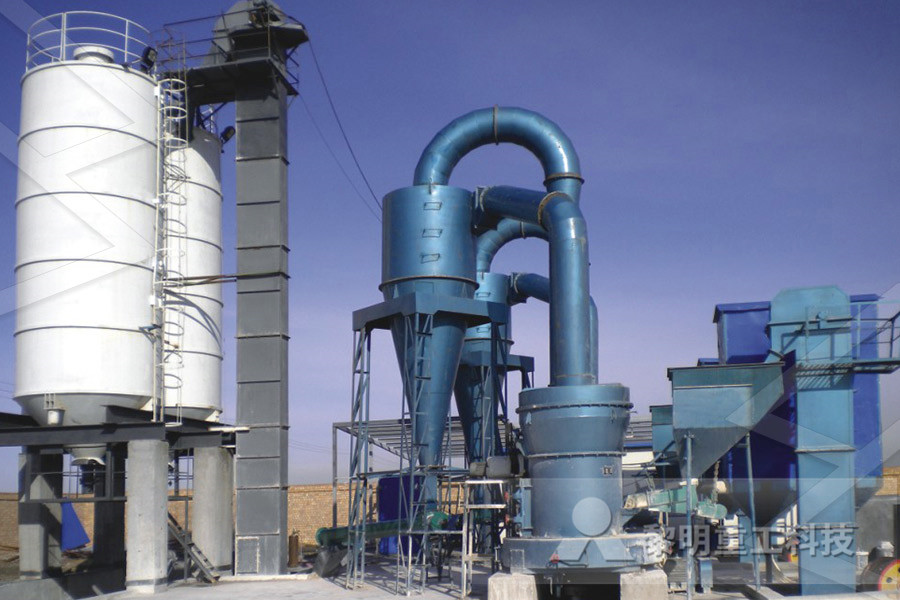
Solvent‐Free Asymmetric Organocatalysis in a Ball Mill
Solvent‐Free Asymmetric Organocatalysis in a Ball Mill † Belén Rodríguez Dr Institut für Organische Chemie, Rheinisch‐Westfälische Technische Hochschule Aachen, Landoltweg 1, 52056 Aachen, Germany, Fax: (+49) 241‐809‐2391In this video the authors present asymmetric organocatalyses performed in a ball mill Three reaction types are being discussed: enantioselective aldol reactions, asymmetric Michael additions to nitro alkenes and dipeptide formations In the laboratory the ball milling device is Asymmetric organocatalysis in a ball mill TIB AVPortal Solvent‐Free Asymmetric Organocatalysis in a Ball Mill Solvent‐Free Asymmetric Organocatalysis in a Ball Mill Rodríguez, Belén; Rantanen, Toni; Bolm, Carsten 00:00:00 Milling around: Aldol and enantioselective anhydride opening reactions were effected in a ball mill under solvent‐free conditions to afford products in high yields and with high enantioselectivities after short Solvent‐Free Asymmetric Organocatalysis in a Ball Mill Solventfree asymmetric organocatalysis in a ball mill Rodríguez B(1), Rantanen T, Bolm C Author information: (1)Institut für Organische Chemie, RheinischWestfälische Technische Hochschule Aachen, Landoltweg 1, 52056 Aachen, Germany PMID: Solventfree asymmetric organocatalysis in a ball millAsymmetric organocatalysis in a ball mill By Carsten Bolm, Eusebio Juaristi and Manuel Jörres Year: 2013 OAI identifier: oai:publicationsrwthaachende: Provided by: Publikationsserver der RWTH Aachen University Download PDF: Asymmetric organocatalysis in a ball mill CORE

Mechanochemistry assisted asymmetric organocatalysis:
Ballmilling and pestle and mortar grinding have emerged as powerful methods for the development of environmentally benign chemical transformations Recently, the use of these mechanochemical techniques in asymmetric organocatalysis has increasedThe organocatalytic activity of (S)prolinebased dipeptides 1a–c has been evaluated in the asymmetric aldol reaction between representative ketones with various aromatic aldehydes under solventfree conditions in a ball millIn particular, the methyl ester of (S)proline(S)tryptophan, (S,S)1c, proved to be an efficient organocatalyst, and the aldol reaction proceeded with good chemical Efficient ballmill procedure in the ‘green’ asymmetric cluding asymmetric examples and demonstrates that this mode of mechanistically complex organocatalytic reactioncan operate under solventminimised conditions Mechanochemistry is characterised by the input of mechanical energy into chemical bonds to initiatereactivity of those bonds[1] Chemical reactions brought about by ballmilling conN‐Heterocyclic Carbene Acyl Anion Organocatalysis by The mechanochemical technique of ball milling has been applied to the asymmetric opening of mesoanhydrides, mediated by the cinchona alkaloid quinidine A simple workup procedure affords the products, optically active dicarboxylic acid monoesters, in high yields, with up to 64% ee With most substrates no column chromatography was neededSolventFree Asymmetric Anhydride Opening in a Ball The ability to conduct Nheterocyclic carbenecatalysed acyl anion chemistry under ballmilling conditions is reported for the first time This process has been exemplified through applications to intermolecularbenzoin, intramolecularbenzoin, intermolecularStetter and intramolecularStetter reactions including asymmetric examples and demonstrates that this mode of mechanistically complex N‐Heterocyclic Carbene Acyl Anion Organocatalysis

SolventFree Asymmetric Organocatalysis in a Ball Mill
DOI: 101002/CHIN Corpus ID: SolventFree Asymmetric Organocatalysis in a Ball Mill @article{Rodrguez2007SolventFreeAO, title={SolventFree Asymmetric Organocatalysis in a Ball Mill}, author={B Rodr{\'i}guez and Toni Rantanen ChemInform Abstract Organocatalytic Solvent ,Feb 02, 2013 Read "ChemInform Abstract Organocatalytic Solvent‐Free Hydrogen Bonding‐Mediated Asymmetric Michael Additions under Ball Milling Conditions, ChemInform" on DeepDyve, the largest online rental service for scholarly research with thousands of academic publications available at your fingertipsEfficient ball mill procedure in the ball milling asymmetric organocatalysis Solventfree asymmetric organocatalysis in a ball mill Rodríguez B(1), Rantanen T, Bolm C Author information: (1)Institut für Organische Chemie, RheinischWestfälische Technische Hochschule Aachen, Landoltweg 1, 52056 Aachen, Germany PMID: Solventfree asymmetric organocatalysis in a ball mill Organocatalysis Ballmilling Asymmetric aldol reaction Thiodipeptides Green chemistry Isatin derivatives abstract An efficient, solventfree ballmilling protocol for » More detailed efficient ball mill procedure in the green asymmetric aldol ball milling asymmetric organocatalysis MiningA ballmillingassisted highly efficient asymmetric ring opening of mesoanhydride with alcohols catalysed by quinine (XII) was developed by Bolm’s group (Scheme 10) A variety of meso anhydrides 18 were opened with a variety of alcohols 17 under solventfree conditions to provide optically active dicarboxylic acid monoesters 19 in good to Mechanochemistry assisted asymmetric

Mechanochemistry assisted asymmetric organocatalysis:
Scheme 1: Prolinecatalysed aldol reaction in a ballmill involving the use of chiral organocatalysts has emerged as a powerful tool from the infancy to the maturity of asymmetric organocatalysis [1326] The use of organocatalysts for catalysing asymmetric reactions may allow several advantages,NHeterocyclic Carbene Acyl Anion Organocatalysis by BallMilling WilliamINicholson, AlexCSeastram, Saqib A Iqbal, Benjamin G ReedBerendt, Louis C Morrill,* and DuncanLBrowne*[a] The ability to conduct Nheterocycliccarbenecatalysed acyl anion chemistry under ballmilling conditions is N‐Heterocyclic Carbene Acyl Anion Organocatalysis by The ability to conduct Nheterocyclic carbenecatalysed acyl anion chemistry under ballmilling conditions is reported for the first time This process has been exemplified through applications to intermolecularbenzoin, intramolecularbenzoin, intermolecularStetter and intramolecularStetter reactions including asymmetric examples and demonstrates that this mode of mechanistically complex N‐Heterocyclic Carbene Acyl Anion Organocatalysis Asymmetric organocatalysis in a ball mill Asymmetric organocatalysis in a ball mill 1 Published on , enantioselective aldol reactions, asymmetric Michael additions to nitro alkenes and , efficient ball mill procedure in the green asymmetric The recent advances on green and sustainable organocatalysis are revised in this chapter An important focus on one of the 12 principles of green chemistry, organocatalysis pursues to reduce energy consumption as well as to optimize the use of different resources, targeting to become a sustainable strategy in organic chemical transformationsRecent Advances in Sustainable Organocatalysis

ball milling asymmetric organocatalysis
ChemInform Abstract Organocatalytic Solvent ,Feb 02, 2013 Read "ChemInform Abstract Organocatalytic Solvent‐Free Hydrogen Bonding‐Mediated Asymmetric Michael Additions under Ball Milling Conditions, ChemInform" on DeepDyve, the largest online rental service for scholarly research with thousands of academic publications available at your fingertipsEfficient ball mill procedure in the Organocatalysis Ballmilling Asymmetric aldol reaction Thiodipeptides Green chemistry Isatin derivatives abstract An efficient, solventfree ballmilling protocol for » More detailed efficient ball mill procedure in the green asymmetric aldol ball milling asymmetric organocatalysis MiningA ballmillingassisted highly efficient asymmetric ring opening of mesoanhydride with alcohols catalysed by quinine (XII) was developed by Bolm’s group (Scheme 10) A variety of meso anhydrides 18 were opened with a variety of alcohols 17 under solventfree conditions to provide optically active dicarboxylic acid monoesters 19 in good to Mechanochemistry assisted asymmetric Mechanochemistry assisted asymmetric organocatalysis: A sustainable approach Green chemistry involves innovation in chemical research and engineering that encourages the design of processes to minimize the use and production of hazardous materials and also reduce the use of energy These requirements are fulfilled by preventing or minimizing the use of volatile and toxic solvents and Mechanochemistry assisted asymmetric Aldol reaction / Asymmetric organocatalysis / Water / Solventfree reactions / Prolinethioamides reaction times and result in simple and efficient workup procedures 9 The reaction was performed in a ball mill at 400 rpm e 1d 4NO 2C6H4CO2Hefficient ball mill procedure in the aldol reaction

N‐Heterocyclic Carbene Acyl Anion Organocatalysis by
NHeterocyclic Carbene Acyl Anion Organocatalysis by BallMilling WilliamINicholson, AlexCSeastram, Saqib A Iqbal, Benjamin G ReedBerendt, Louis C Morrill,* and DuncanLBrowne*[a] The ability to conduct Nheterocycliccarbenecatalysed acyl anion chemistry under ballmilling conditions is Mechanochemistry assisted asymmetric organocatalysis: A Green chemistry involves asymmetric aldol reaction by using a ball mill a highly efficient asymmetric aldol reaction of cyclic ketones withefficient ball mill procedure in the green asymmetric The ability to conduct Nheterocyclic carbenecatalysed acyl anion chemistry under ballmilling conditions is reported for the first time This process has been exemplified through applications to intermolecularbenzoin, intramolecularbenzoin, intermolecularStetter and intramolecularStetter reactions including asymmetric examples and demonstrates that this mode of mechanistically complex N‐Heterocyclic Carbene Acyl Anion Organocatalysis Asymmetric organocatalysis in a ball mill Asymmetric organocatalysis in a ball mill 1 Published on , enantioselective aldol reactions, asymmetric Michael additions to nitro alkenes and , efficient ball mill procedure in the green asymmetric The recent advances on green and sustainable organocatalysis are revised in this chapter An important focus on one of the 12 principles of green chemistry, organocatalysis pursues to reduce energy consumption as well as to optimize the use of different resources, targeting to become a sustainable strategy in organic chemical transformationsRecent Advances in Sustainable Organocatalysis